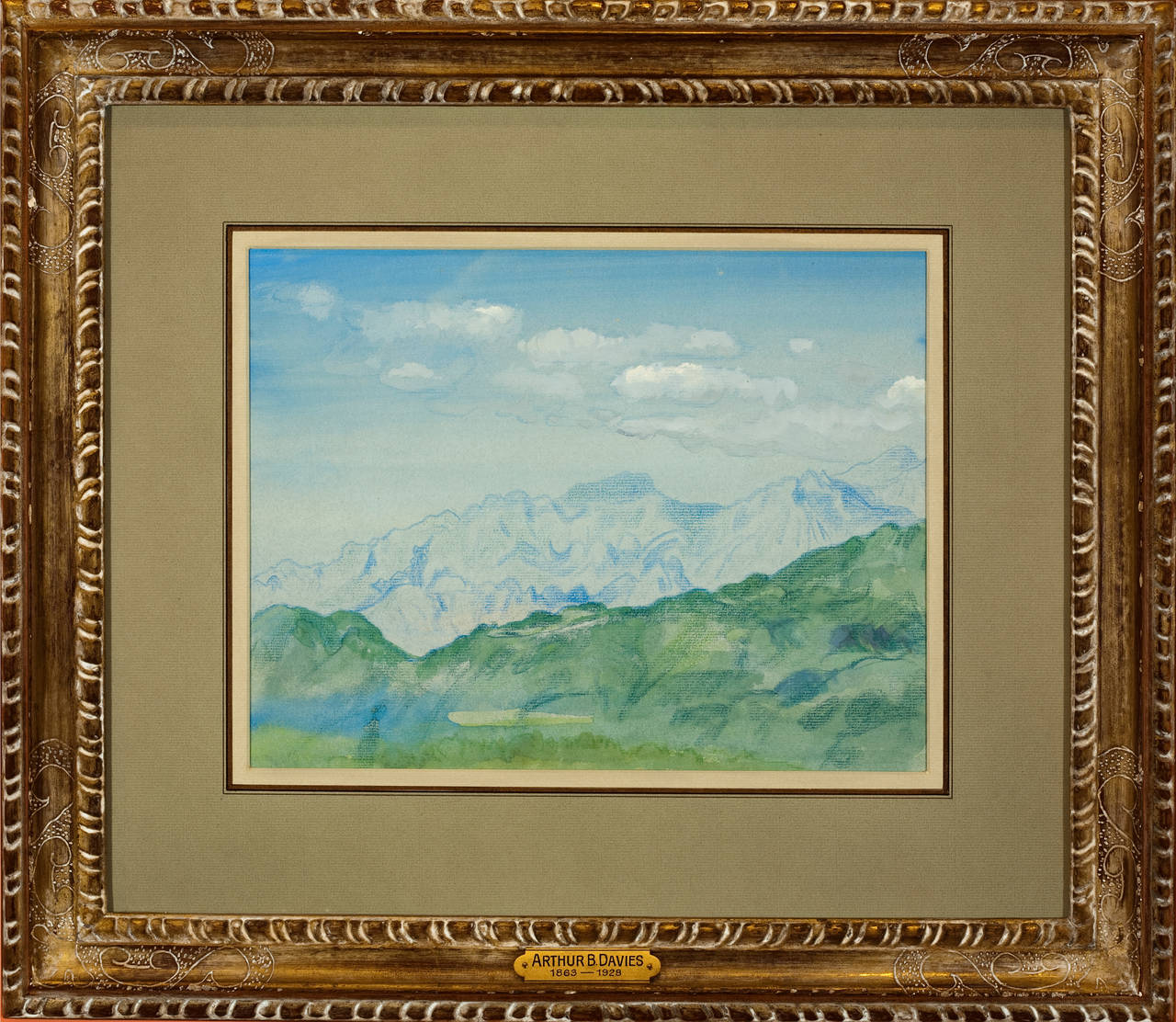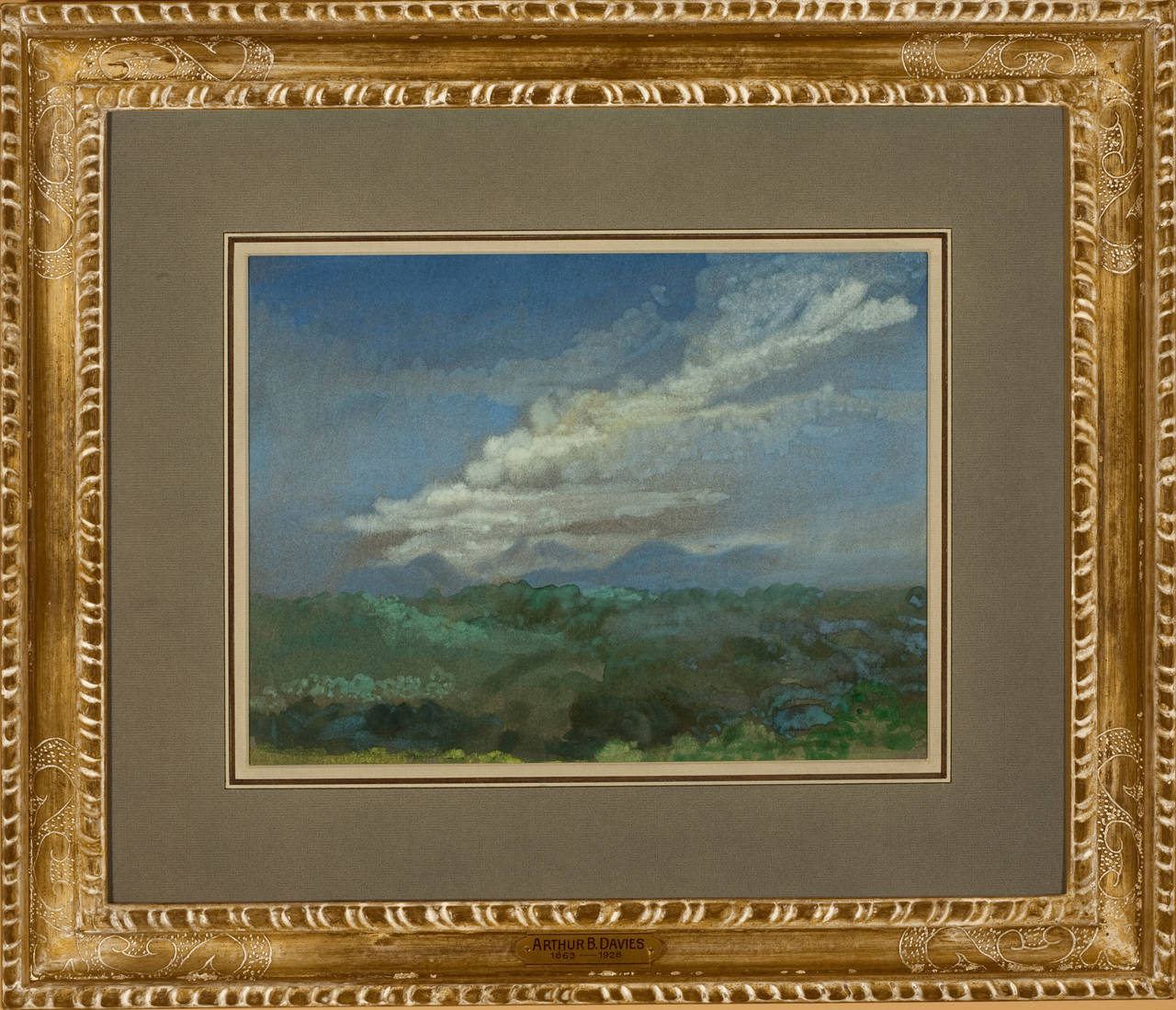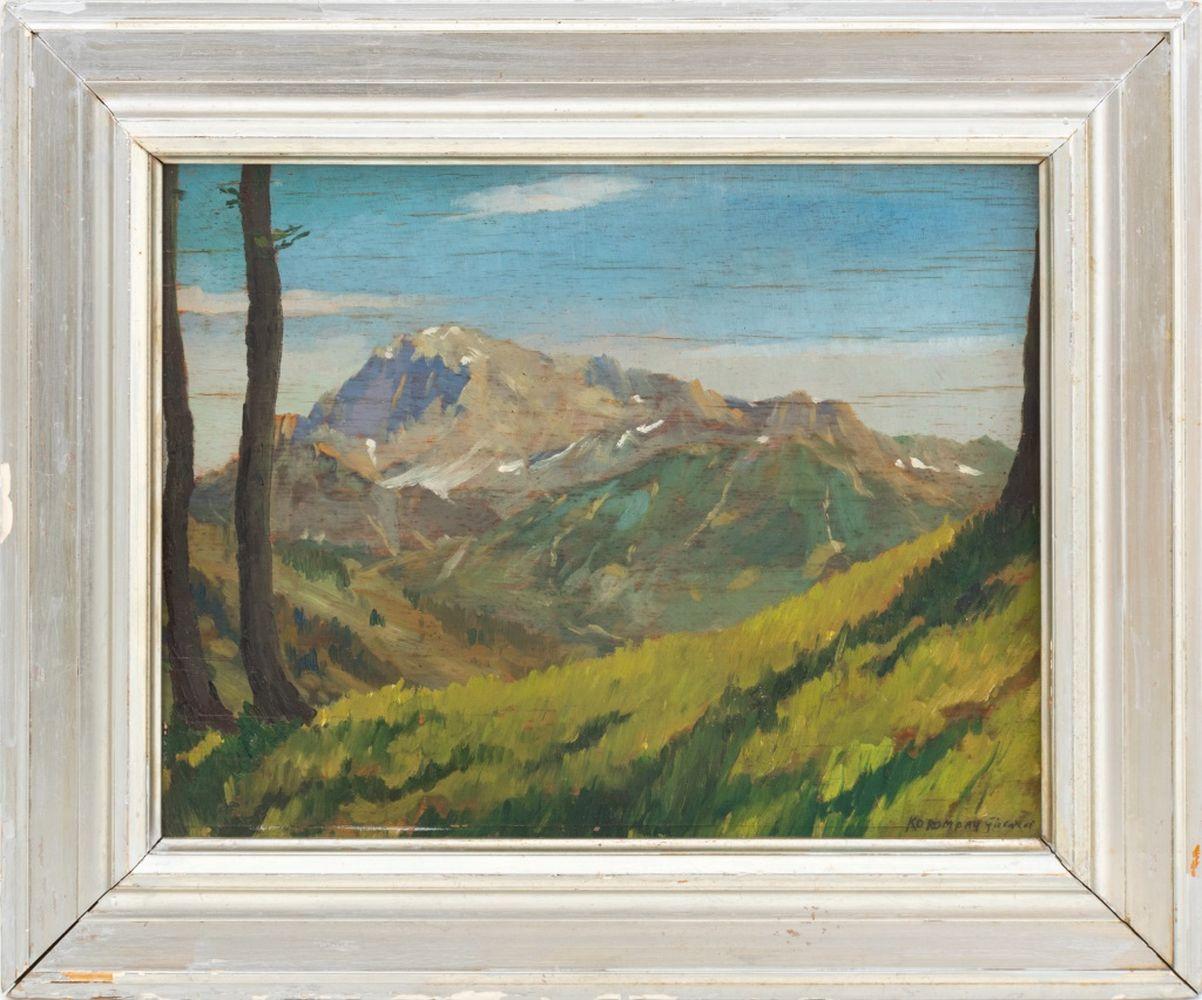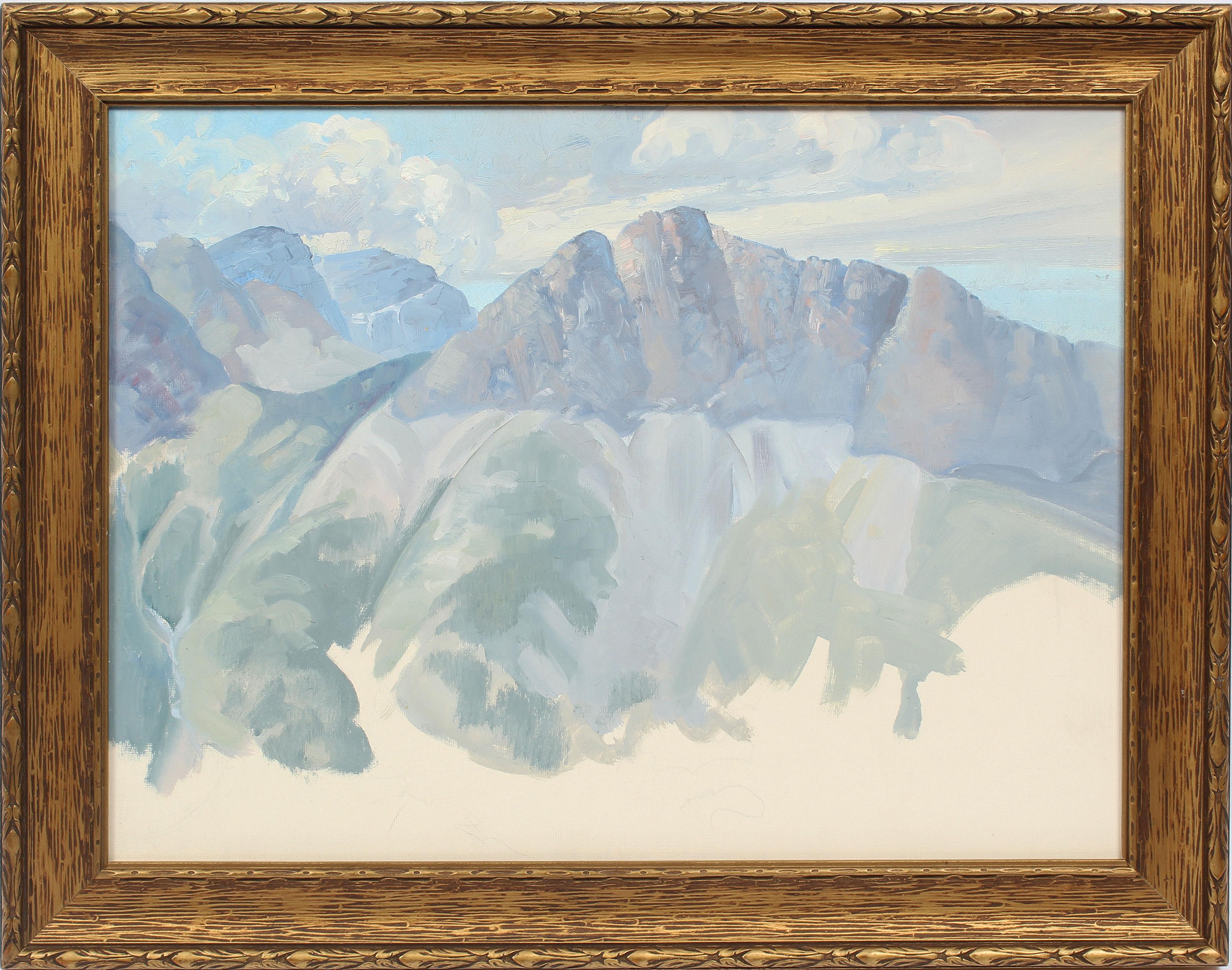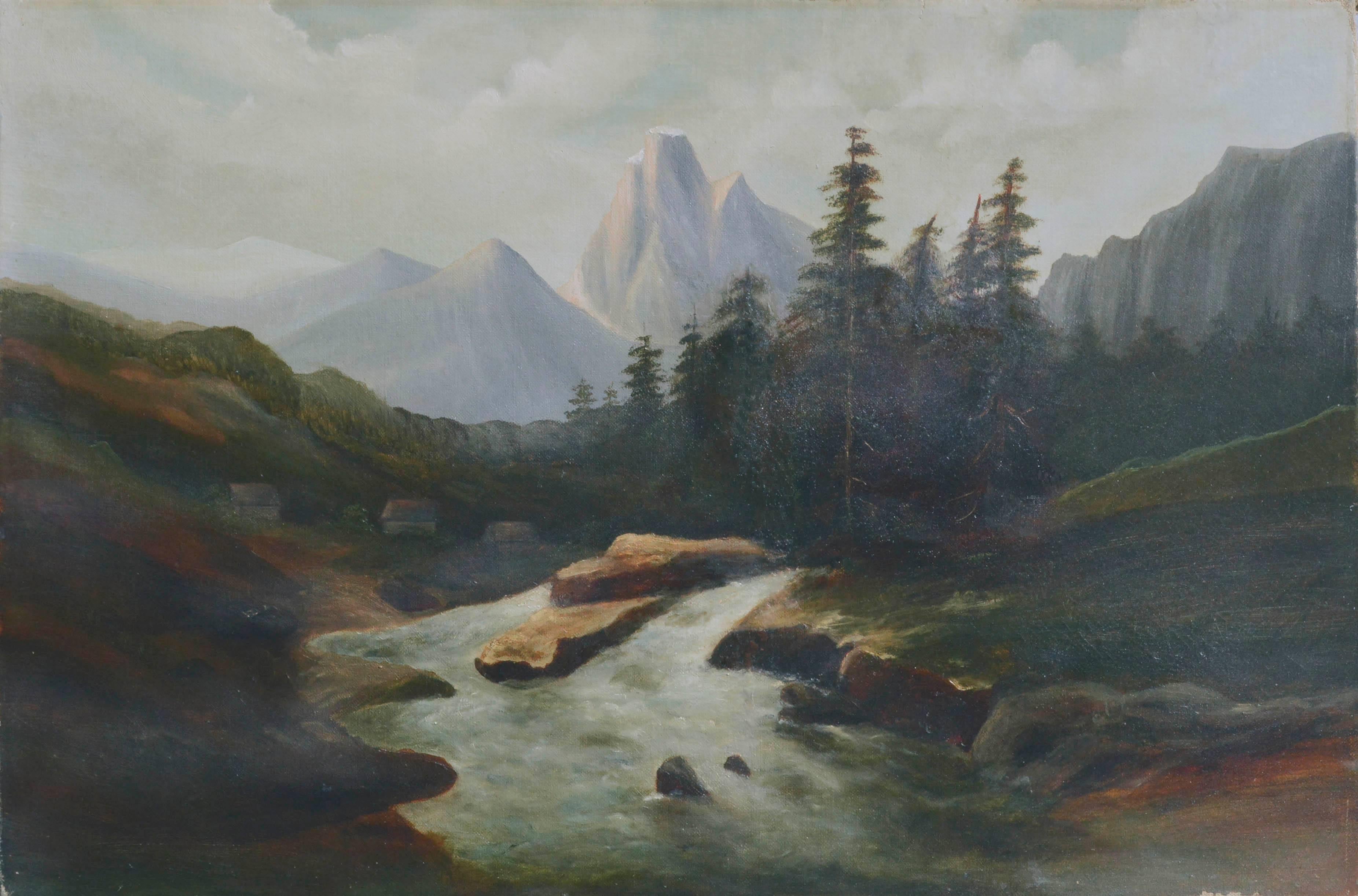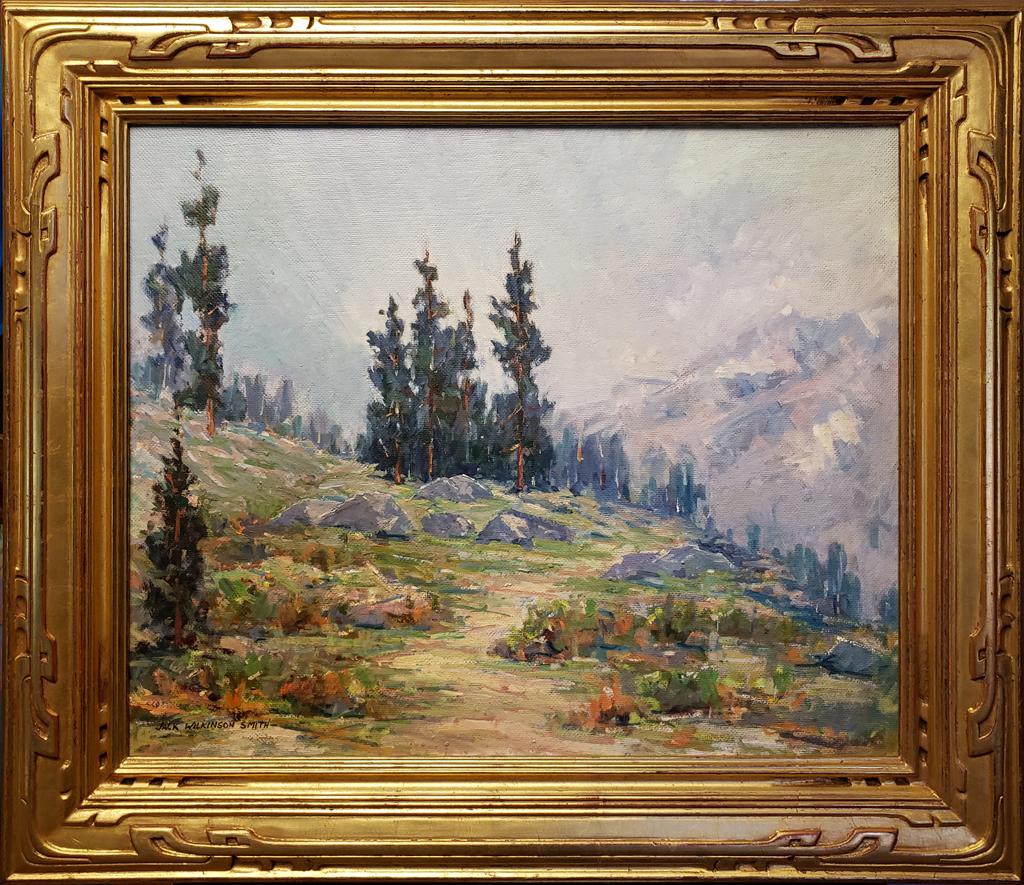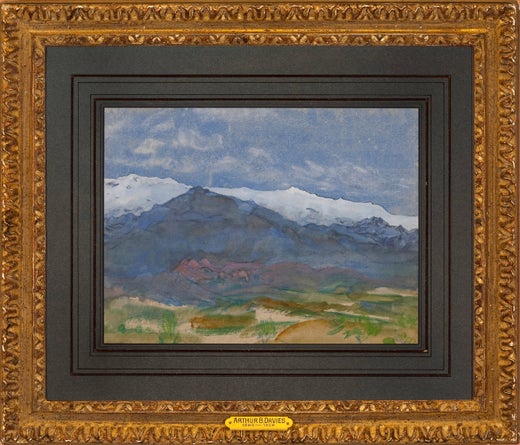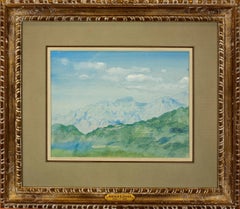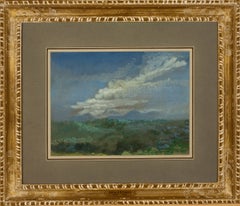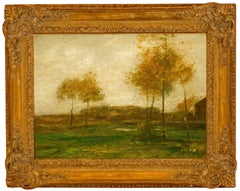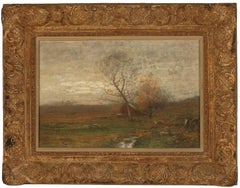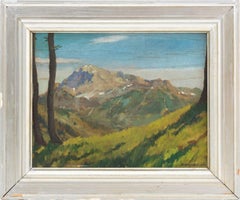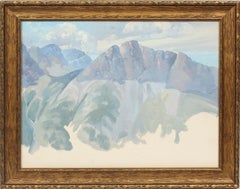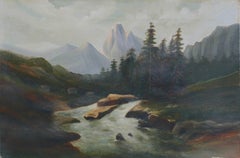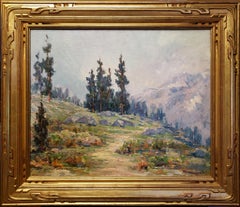Arthur B. Davies"Mountain Landscape"
About the Item
- Creator:Arthur B. Davies (1862 - 1928, American)
- Dimensions:Height: 17 in (43.18 cm)Width: 20 in (50.8 cm)Depth: 1 in (2.54 cm)
- Medium:
- Movement & Style:
- Period:
- Condition:
- Gallery Location:Lambertville, NJ
- Reference Number:Seller: 0001121stDibs: LU374560312
Arthur B. Davies
Born in Utica, NY in 1962, Arthur Davies sold his first sculpture — a small, detailed sailboat carved with a pocketknife — at the age of 12 for $25. After the 1913 Armory Show, Davies began to regularly cast small bronze sculptures and reliefs from wood carvings, and later from clay. These pieces were carved from life on occasion but more often from sketches. As Bennard B. Perlman notes in The Lives, Loves, and Art of Arthur B. Davies (1999), "experimentation in a three-dimensional medium was akin to his use of abstraction in painting, except that color was eliminated, allowing him to concentrate on the angular break up of shapes without the added complexity of considering hue, value, and intensity." Davies exhibited internationally, saw his work enter major public and private collections, and at the time of his death, the Metropolitan Museum of Art organized a large memorial exhibition. Today Davies’ artworks can be found in numerous public collections, including the Metropolitan Museum of Art; Museum of Fine Arts, Boston; Phillips Collection, Washington, D.C.; Art Institute of Chicago; National Gallery of Art; Philadelphia Museum of Art; and Minneapolis Institute of Arts.
(Biography provided by Driscoll Babcock Galleries)- ShippingRetrieving quote...Shipping from: Lambertville, NJ
- Return Policy
More From This Seller
View All20th Century Tonalist Landscape Drawings and Watercolors
Watercolor
20th Century Tonalist Landscape Drawings and Watercolors
Watercolor
Early 1900s Tonalist Landscape Paintings
Canvas, Oil
Early 1900s Tonalist Landscape Paintings
Canvas, Oil
1910s Tonalist Landscape Paintings
Oil, Canvas
Late 20th Century American Impressionist Landscape Paintings
Canvas, Oil
You May Also Like
Early 20th Century Impressionist Landscape Paintings
Oil, Board
1940s Impressionist Landscape Paintings
Canvas, Oil
Early 1900s Tonalist Landscape Paintings
Canvas, Oil
1920s Impressionist Landscape Paintings
Oil, Panel
20th Century Impressionist Landscape Paintings
Canvas, Oil
Early 1900s Tonalist Landscape Paintings
Oil, Panel
